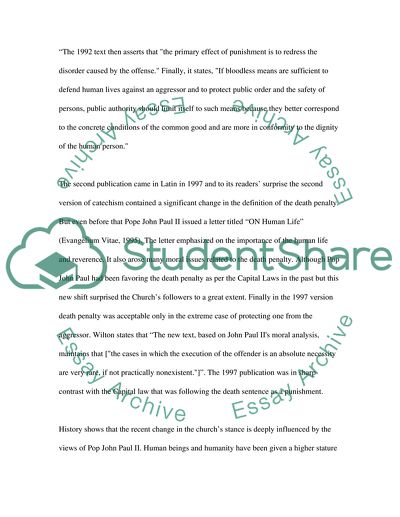Cite this document
(“A History of the Catholic Church on the Death Penalty Research Paper”, n.d.)
A History of the Catholic Church on the Death Penalty Research Paper. Retrieved from https://studentshare.org/history/1745450-give-a-history-of-the-catholic-church-on-the-death-penalty-and-note-how-it-has-changed-over-time
A History of the Catholic Church on the Death Penalty Research Paper. Retrieved from https://studentshare.org/history/1745450-give-a-history-of-the-catholic-church-on-the-death-penalty-and-note-how-it-has-changed-over-time
(A History of the Catholic Church on the Death Penalty Research Paper)
A History of the Catholic Church on the Death Penalty Research Paper. https://studentshare.org/history/1745450-give-a-history-of-the-catholic-church-on-the-death-penalty-and-note-how-it-has-changed-over-time.
A History of the Catholic Church on the Death Penalty Research Paper. https://studentshare.org/history/1745450-give-a-history-of-the-catholic-church-on-the-death-penalty-and-note-how-it-has-changed-over-time.
“A History of the Catholic Church on the Death Penalty Research Paper”, n.d. https://studentshare.org/history/1745450-give-a-history-of-the-catholic-church-on-the-death-penalty-and-note-how-it-has-changed-over-time.


